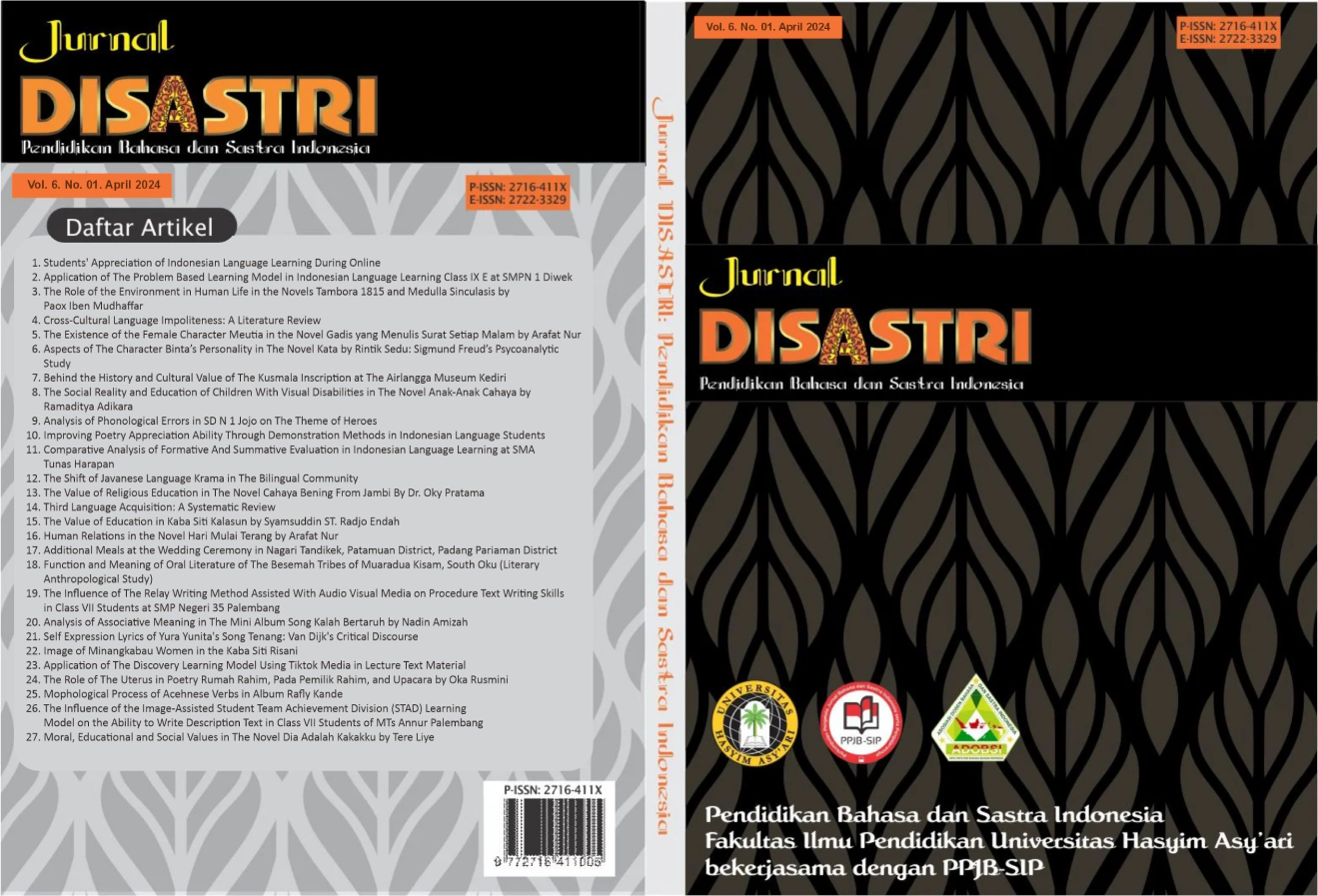The Shift of Javanese Language Krama in The Bilingual Community
DOI:
https://doi.org/10.33752/disastri.v6i1.5733Keywords:
sociolinguistics, communication, socio-cultural, form of shiftAbstract
Language contact in social interaction in bilingual communities in Trenggalek district, especially in Miri hamlet, Mlinjon village, is an interesting phenomenon to be studied from a sociolinguistic perspective. Miri Hamlet is one of the areas in Trenggalek Regency with a remote geographical location category. The majority of the Miri hamlet community are bilingual people who master Javanese and Indonesian as a means of communication. This study uses a survey method with a quantitative approach. The source of data in this study is the local community and the data selected is a form of language variation that has undergone a shift. This phenomenon has a correlation not only with aspects of language, but also with socio-cultural aspects. This study aims to describe 1) the form of Javanese language shift in the family domain and 2) the influence of socio-cultural factors on the Javanese language shift in Miri hamlet. The results of this study indicate that (1) there is a shift in the use of the Javanese Krama language in communication between families in Miri hamlet (2) the factors causing the language shift include the influence of social media and the level of public awareness of the preservation of Javanese culture.
Downloads
Downloads
Published
How to Cite
Issue
Section
License
Copyright (c) 2024 Mufti Alfarobby, Agusniar Dian Savitri, Kisyani Laksono

This work is licensed under a Creative Commons Attribution 4.0 International License.




.jpg)










